Hannah Teagle begins her mornings like many gardeners in the South. She cradles a steaming coffee mug, deadheads spent blooms, and sings to her plants. But her front-yard vista looks a little different than the Appalachian foothills—it’s a straight-shot view of Alaska’s snow-cloaked Denali, the highest mountain peak in North America.

Photo: Kit Bernardi
Mount Denali dominates the Alaska Range.
The thirty-four-year-old from Chapel Hill, North Carolina, is the grower and groundskeeper at Camp Denali, a storied family-owned wilderness lodge at the geographic center of six-million-acre Denali National Park and Preserve in central Alaska. Inside the greenhouse she nurtures some two dozen lettuce varieties, mustard greens, radishes, salad turnips, herbs, microgreens, and spinach. A fence surrounding raised garden beds outside deters hare and moose from munching on kale, chard, peas, carrots, rhubarb, and beans.
She ticks off the math and marvels. “It’s insane that a total of a thousand square feet of densely planted space yields approximately five hundred pounds of produce,” she says, “which then feeds guests and thirty-five staff living on-site.”
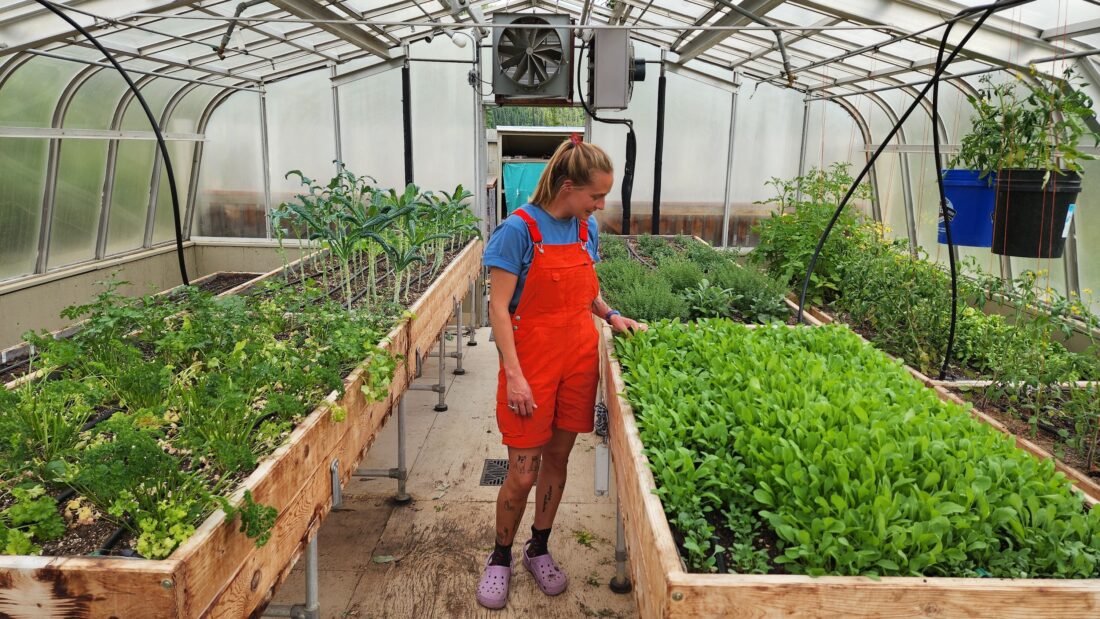
Photo: Kit Bernardi
Hannah Teagle working in the greenhouse of Camp Denali’s 1,000-square-foot micro-farm.
Because of the 2021 Pretty Rocks slide, Camp Denali is one of only three lodges operating inside the park. The slide destroyed part of the only road that winds ninety-two miles into Denali’s interior, ending almost at the camp’s entrance. This isolation affords guests unprecedented wildlife viewing and requires everyone to fly in and out on five-passenger Cessna 206 aircraft. Until the road reopens in 2027, Camp Denali welcomes a maximum of twenty-five guests, all staying in cozy style: Nineteen log cabins—all with front porches and picture-window views of Denali—come equipped with wood-burning stoves, outdoor potable water spigots, and solar-powered lamps. (Camp Denali is mostly powered by solar energy and generates 98 percent of its own electricity.)
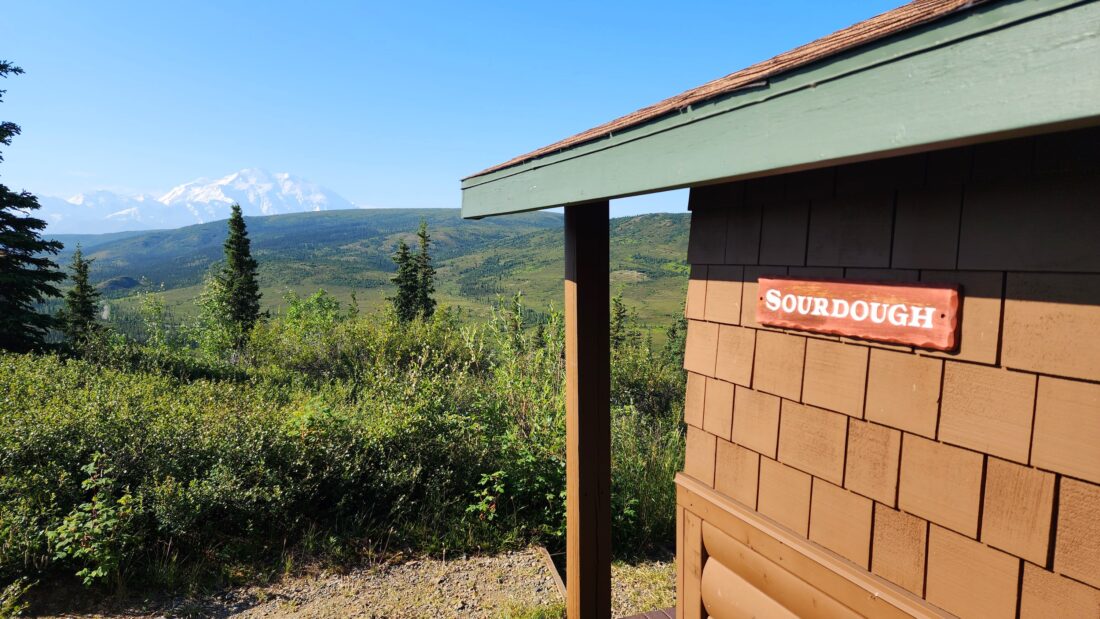
Photo: Kit Bernardi
Each guest cabin has a front porch view of Denali and bears a name reflective of Alaska’s history, culture, or geography.
Teagle, who grew up gardening in the comparatively balmy USDA Plant Hardiness Zone 8a, says she now practices a patient “experimental approach” to farming in zone 2b. That means a shorter but aggressive growing season—just 120 days between May and September, when Camp Denali’s location at 63 degrees north latitude gets nearly twenty hours of visible sunlight and four hours of dusky light per day. Temperatures can spike as high as 85 degrees Fahrenheit but then dip below 30 degrees at night. But here’s a happy difference between where Teagle grew up and where she gardens now: Aphids are the only plant pest.
Teagle works closely with executive chef Zoe Denenberg to prep and plan for the season. Each winter she calculates seed and supply orders to support the menus Denenberg creates. The team always features Alaskan food purveyors, their own micro-farm produce, and assorted berries staff harvest on the surrounding tundra. “I seek to stretch the lifespan out of all the produce Hannah grows,” Denenberg says. “For example, using carrots not only as roasted carrots but to make chimichurri of their green tops.”
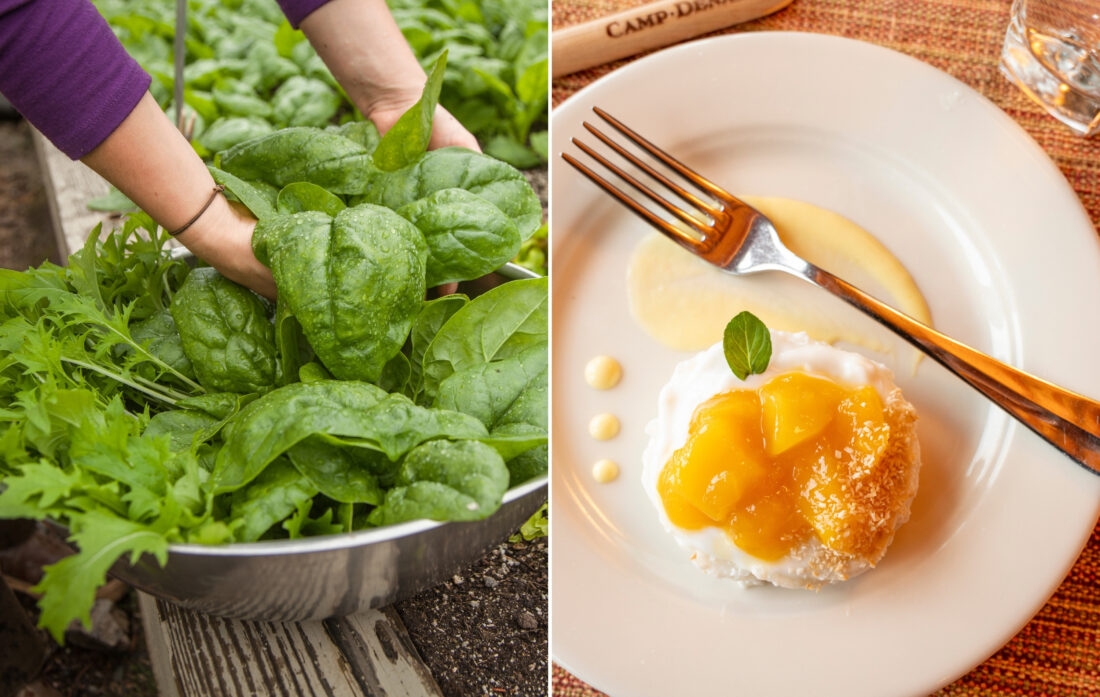
Photo: Courtesy of Camp Denali (left), Ralph Clevenger (right)
Camp Denali’s menus feature micro-greens and vegetables grown in Hannah’s greenhouse and garden.
Nearly all supplies, including planting soil, Alaskan fish emulsion fertilizer, and waste that cannot be composted are transported in and out by air. “The shift to flights incentivized us,” co-owner Jenna Hamm says. “We’re doubling our efforts to operate as efficiently as possible and reduce waste.”
To that end, Teagle composts kitchen prep food scraps and all brown paper towels. “Last year,” Teagle explains, “these efforts amounted to 1,400 pounds of waste diverted from being flown out and sent to landfill.”
Teagle also tends the lodge’s abundant flower beds and window boxes. Jumbo, fuzzy bumblebees bounce between purple fireweed spires, marigolds, pansies, and nasturtiums, edible flowers that garnish guests’ dinner plates. Guests are welcome to join guided plant walks on lodge grounds and visit the micro-farm. For Teagle, it’s all about taking good care of one another in a place that is truly remote. “I love growing nutritious food for guests,” she says, “but also for staff because I’m feeding my little community.”
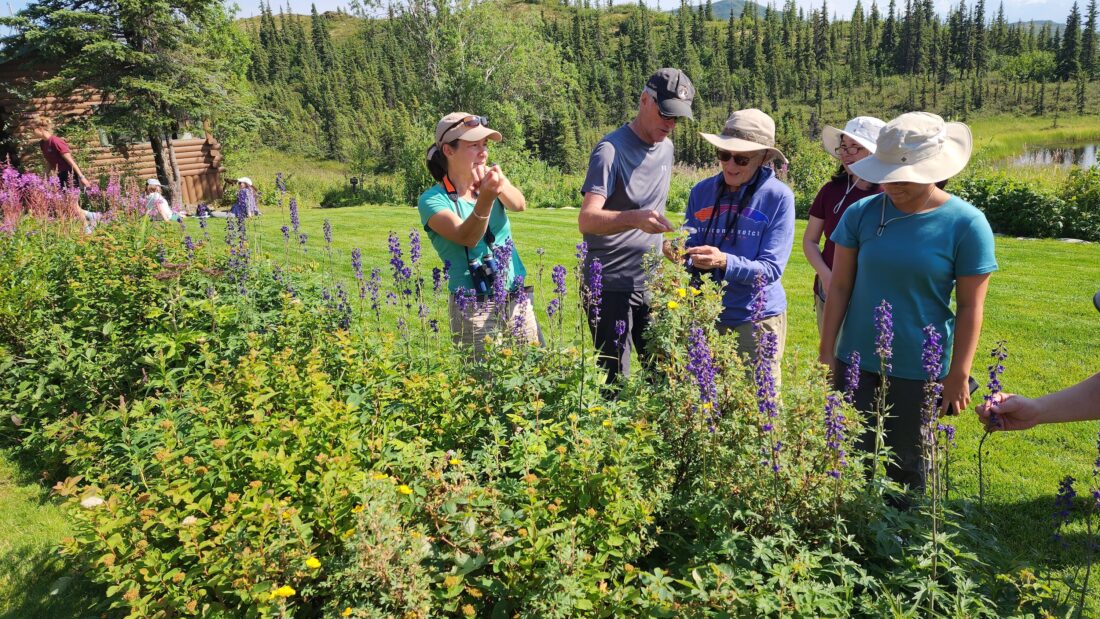
Photo: Kit Bernardi
Guests on a guided plant walk.
More Alaska Highlights for Garden Lovers
• According to Alaska’s Census of Agriculture, 43 percent of Alaska’s farms consist of less than ten acres. Learn more about small-scale farming in the Matanuska-Susitna Valley on Revel Treks & Tours agricultural-themed tours starting in Palmer, an easy day trip from Anchorage. Visitors who opt to overnight often stay at Palmer’s 1935 Colony Inn, the cozy restored Matanuska Colony Teacher’s Dormitory. And BlueWater BaseCamp’s contemporary chalets are tucked into the nearby forested Eklutna Valley.
• One of the stops: Sauntering Roots Farm in Palmer. Brandi Jo Nyberg, originally from Orlando, and Phoebe Autry, from Albany, Georgia, co-own this 1.5-acre farm. With the help of Brandi Jo’s husband, Dale, they grow shallots, garlic, spring greens, broccoli, cauliflower, and carrots. Three years ago, the women partnered with local farmer Zoe Fuller to create the seasonal Matanuska Community Farmers Market held on Wednesdays. It functions like a “pop-up grocery store,” with sixteen valley vendors. “It’s surprising how many Southerners live here,” Nyberg says. “They get so excited to find fresh green beans and collards.”
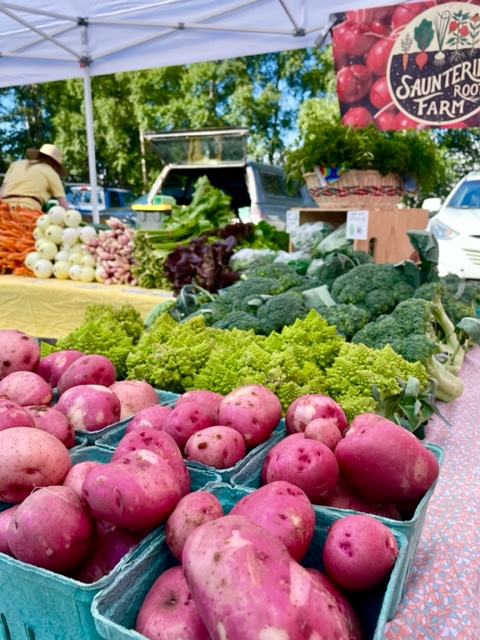
Photo: Brandi Jo Nyberg, Sauntering Roots Farm
Vegetables at Matanuska Community Farmers Market.
• Located within USDA Hardiness Zone Zones 4b and 5a, Palmer is Alaska’s agriculture epicenter. In 1935, a New Deal resettlement program transplanted 203 farming families from the Lower 48 to establish an experimental agricultural community called the Matanuska Colony Project. Palmer’s Colony House Museum exhibits preserve this history. “We see our farming efforts as both a new chapter in the valley’s agricultural legacy,” Autry says, “and an important way to help our community be self-sustaining.”
• Forty-four miles north of Anchorage, produce grown in the glacial Matanuska-Susitna Valley has weighed in at more than the resident 1,600-pound moose. The 2024 Alaska State Fair’s winning pumpkin tipped the scale at 2,035 pounds!


Comments are closed.